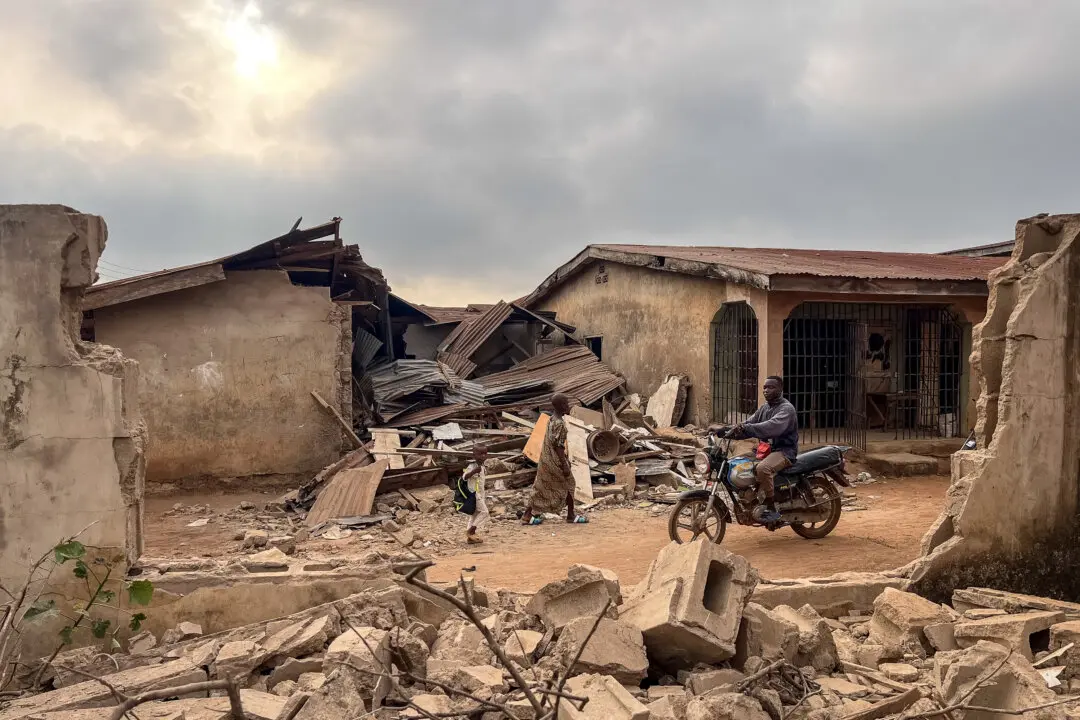The following is an abridged translation of an analysis published Sept. 6 on the website s8p.cn, which carries news and reports on China’s manufacturing industry.
China’s decadeslong economic boom, based on manufacturing for export, is now going in reverse. With orders in some Chinese manufacturing industries declining, the country is facing factory closures and massive worker layoffs.
China’s August manufacturing PMI was 47.1 according to Markit Economics, a record low since March 2009. It made August the sixth consecutive month with the PMI lower than 50—the threshold between expansion and contraction—showing a further slowdown in China’s manufacturing industry. The Producer Price Index, which measures the change in prices, continued to decline significantly, and profit margins in many industries have been further squeezed. In July, railway freight volume plunged 10.9 percent and electricity generation fell 2.8 percent. Everything indicates China’s recession is getting worse.
Electronics Industry
In the first half of this year, New Kingpo and Samsung accelerated their pace of withdrawal from China. Flextronics went to the United States to set up plants, and Foxconn moved to India on a large scale.
China’s electronics industry, which was once popular around the world, started going downhill. July’s revenues of all key electronics manufacturers fell compared to last year. This is a strong signal that China’s electronics industry is moving toward decline. Following this trend, the electronics industry might fall 10–20 percent in the second half of the year.
Air Conditioning Industry
China’s air conditioner market can be described as very poor due to multiple factors, including weather, the economic downturn, and the real estate decline. Data from the first to third quarters of the year by electronics suppliers, discount stores, and traditional retailers show that overall retail sales in the air conditioning industry fell 27 percent. The rest of the year is offseason for air conditioning sales, and with real estate slumping and freezing temperatures in many cities, the air conditioning market will decline further.
Textile and Garment Industry
There have been many news reports recently on China’s textile industry. Textile giant Zhuangji Group declared bankruptcy in May. The head of Baolijia Group, a textile giant in East China, fled to escape from debt obligations. Not long ago, the century-old textile factory First Jinan National Cotton Factory, that was once prosperous, went bankrupt. Another Fortune 500 enterprise, Zhejiang Red Sword Group, also reported bankruptcy. Uniqlo, Muji, Aoyama Shoji, Li & Fung, Tokyo Style, and Honeys are all accelerating efforts to transfer orders to Southeast Asia.
Footwear Industry
Hong Kong and Taiwan Footwear companies left China at the beginning of 2008. Pou Chen of Taiwan, Oasis Shoes, Huajian Group, CiChang, and other footwear giants have all set up bases overseas. Their next step is to completely move out of China. Shoemaking bases are closing or leaving not only in the Pearl River Delta, but also in Wenzhou, Zhejiang Province, and in Jinjiang, Fujian Province. Due to high labor, rents and other operating costs, a large number of small and mid-sized shoe manufactures have also collapsed.
Ceramics
During the break-neck expansion since 2008, China’s production capacity of construction ceramics and sanitation wares, such as toilets and sinks, was able to supply two to three times the world’s annual needs. But with the real estate sector going down in recent years, business closures are surging. Once real estate construction stops, demand for ceramic sanitation ware also declines and will remain low for the next 10 to 20 years.
Furniture Industry
Since 2014, large furniture businesses have shut down one after another. Last year, Shenzhen’s home furniture giants Huayuan Villa and Fuzhi Island declared bankruptcy. On May 3, 23-year-old Biaozhou Furniture in Guangzhou declared bankruptcy. Yongxin Furniture, also known as Dongguan’s Furniture Aircraft Carrier, also collapsed.
According to the latest statistics, 849 furniture factories have closed down in the past two years in Longgang Town in Shenzhen, Houjie Town of Dongguan, and Longjiang Town in Foshan.
Auto Parts Packaging
A few years ago, China’s car sales grew over 10 percent each year. China has become the world’s largest automobile consumer. This led to a booming Chinese auto parts industry. However, while many manufacturers still believed in the China dream, car sales suddenly halted. In July, Changan Automobile’s production was 22.29 percent lower and sales was 8.36 percent lower than the previous year.
China’s July car sales were reported as 1.5 million, 7.1 percent down from last year. Passenger car sales were 1.27 million, 6.6 percent down from last year, the largest drop since February 2013.
Layoffs
With economic indicators going down at an accelerated rate, many businesses have abandoned the fantasy that there will be a quick rebound. They have begun cutting operating costs through massive layoffs to cope with reduced orders.
In the first half of the year, Lenovo, Hewlett-Packard, Mondelēz International, Samsung, HTC, and other world-renowned companies have started layoffs.
In the next six months, iron and steel, machinery, electronics, appliance manufacturers, furniture, pottery, sanitation ware, flooring, hardware, and other industries closely related to real estate development, will likely need to make drastic layoffs.





